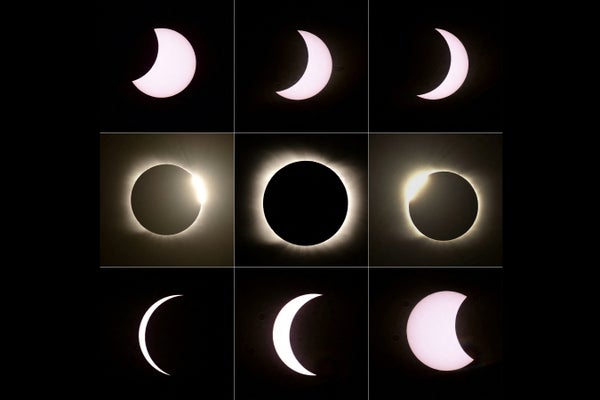Visually Impaired People Can Experience Eclipses, Too
Scientists have created a guide to the 2024 total solar eclipse for the visually impaired that includes tactile graphics
This combination of pictures created on December 14, 2020 shows the different stages of the total solar eclipse as seen from Piedra del Aquila, Neuquen province, Argentina on December 14, 2020.
Ronaldo Schemidt/AFP via Getty Images
The following essay is reprinted with permission from ![]() The Conversation, an online publication covering the latest research.
The Conversation, an online publication covering the latest research.
Many people in the U.S. will have an opportunity to witness nearly four minutes of a total solar eclipse on Monday, April 8, 2024, as it moves from southern Texas to Maine. But in the U.S., over 7 million people are blind or visually impaired and may not be able to experience an eclipse the traditional way.
Of course they, like those with sight, will feel colder as the Sun’s light is shaded, and will hear the songs and sounds of birds and insects change as the light dims and brightens. But much of an eclipse is visual.
On supporting science journalism
If you’re enjoying this article, consider supporting our award-winning journalism by subscribing. By purchasing a subscription you are helping to ensure the future of impactful stories about the discoveries and ideas shaping our world today.
We are a planetary scientist and an astronomer who, with funding and support from NASA’s Solar System Exploration Research Virtual Institute, have created and published a set of tactile graphics, or graphics with raised and textured elements, on the 2024 total solar eclipse.
The guide, called “Getting a Feel for Eclipses,” illustrates the paths of the 2017 total, 2023 annular and 2024 total solar eclipses. In a total eclipse, the Moon fully blocks the Sun from Earth view, while during an annular eclipse, a narrow ring of sunlight can be seen encircling the Moon.
The tactile graphics and associated…
Read the full article here







